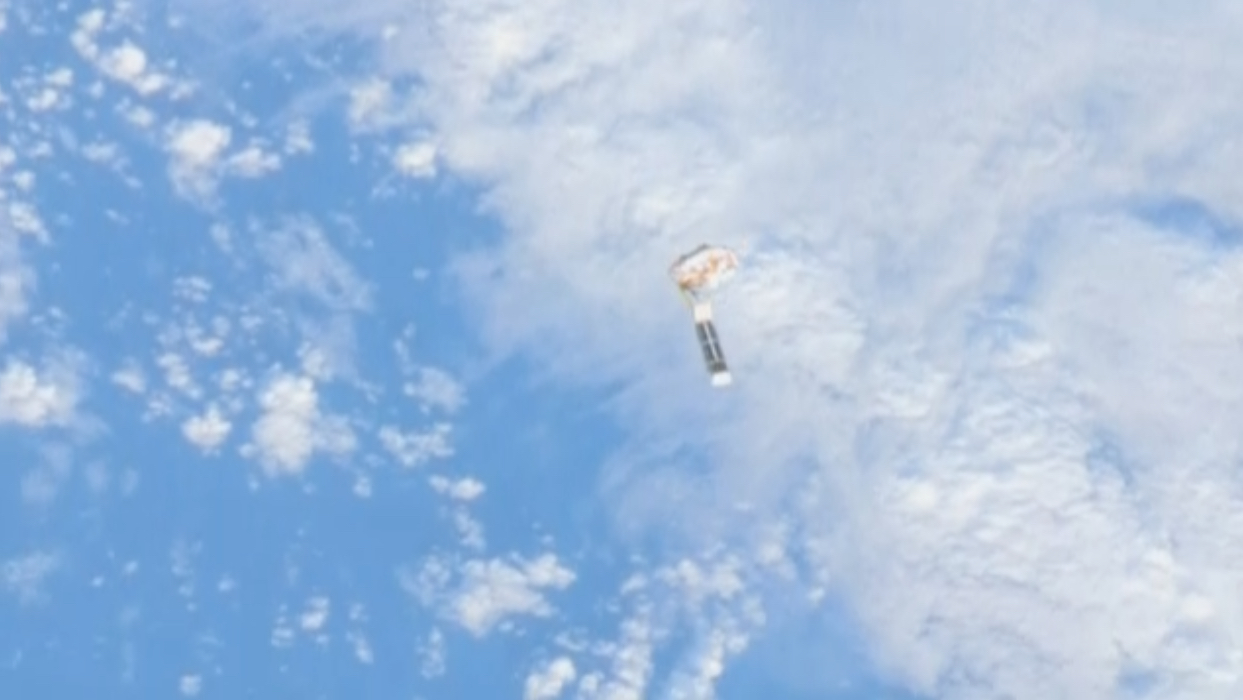Newly Tested Parachute Could Land Cubesats Without Thrusters
A new NASA nanosatellite is testing a cross-shaped parachute, called an Exo-Brake, which could allow small satellites to return to Earth without the directional aid of rocket boosters.
NASA launched the TechEdSat-6 to the International Space Station on Nov. 12. This nanosatellite is the sixth installment in NASA's Technology Educational Satellite series, a project that tests different tracking and communication technologies. TechEdSat-6 is the fourth satellite to test the Exo-Brake. The satellite was released into low-Earth orbit on Nov. 20 to begin its experiments, deploying its Exo-Brake once it was safety away from the space station. The agency released a video of the satellite's deployment. [In Photos: Tiny Cubesats Launched from Space Station]
The current version of the Exo-Brake uses struts and flexible cords to warp the parachute, "much like how the Wright brothers used warping to control the flight behavior of their first wing design," Marcus Murbach, the device's inventor, said in a previous NASA statement. Engineers will be able to use the device to steer nanosatellites to desired landing sites without using fuel, which adds significant weight to a space-bound payload, according to this NASA statement. Currently, small satellites would have to fire rocket boosters to control their direction as they deorbit.
Small satellites are relatively quick and inexpensive to develop, build, and deploy compared to conventional satellites. As a result, they've become increasingly important in space, military and telecom research. The Exo-Brake would offer a low-priced way to return samples to Earth from the space station or other orbiting platforms, NASA. What's more, engineers are looking to use the device to deorbit satellites once they have completed their missions, which would combat the growing threat of space-junk accumulation in orbit, according TechEdSat-6's mission profile. NASA also hopes to build on the technology to develop systems that could land small satellites on other celestial bodies, like Mars, according to the statement that accompanied the video.
Email Harrison Tasoff at htasoff@space.com or follow him @harrisontasoff. Follow us @Spacedotcom, Facebook and Google+. Original article on Space.com.
Breaking space news, the latest updates on rocket launches, skywatching events and more!

Harrison Tasoff is a science journalist originally from Los Angeles. He graduated from NYU’s Science, Health, and Environmental Reporting Program after earning his B.A. in mathematics at Swarthmore College. Harrison covers an array of subjects, but often finds himself drawn to physics, ecology, and earth science stories. In his spare time, he enjoys tidepooling, mineral collecting, and tending native plants.

